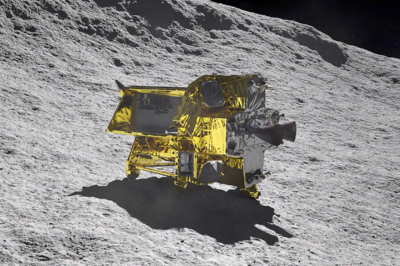
Japan’s moon lander, initially not built to withstand the harsh conditions of lunar nights, has remarkably woken up once again, surviving its third freezing stint on the moon. Japan’s Aerospace Exploration Agency (JAXA) confirmed on Wednesday that they received a signal from the Smart Lander for Investigating Moon (SLIM) after it landed three months ago.
This unexpected survival through another lunar night, where temperatures plummet to minus 170 degrees Celsius, underscores the resilience of the SLIM, which was Japan’s first moon lander and marked the country as the fifth to successfully land a probe on the moon. Despite landing upside down in January, which prevented its solar panels from immediately catching sunlight, the lander reactivated with the sunrise, continuing its mission.
Originally designed to test Japan’s precision landing technology and gather geological data, SLIM was not expected to endure the extreme temperature fluctuations of the lunar nights. However, it has defied these expectations, maintaining key functions after several cycles of harsh temperature changes.
JAXA has expressed its intention to monitor the lander’s condition closely as it continues to function beyond its anticipated capability. This survival not only provides valuable data on the resilience of space technology but also contributes to broader scientific knowledge, offering insights into the moon’s origins through the study of its mineral compositions in comparison with Earth.
The revival of SLIM came just days after NASA re-established communication with Voyager 1, demonstrating significant resilience and longevity in space missions. Meanwhile, other international efforts, such as a terminated U.S. private lunar probe and a non-responsive Indian lander, highlight the challenges and uncertainties of space exploration.








































Leave a Reply